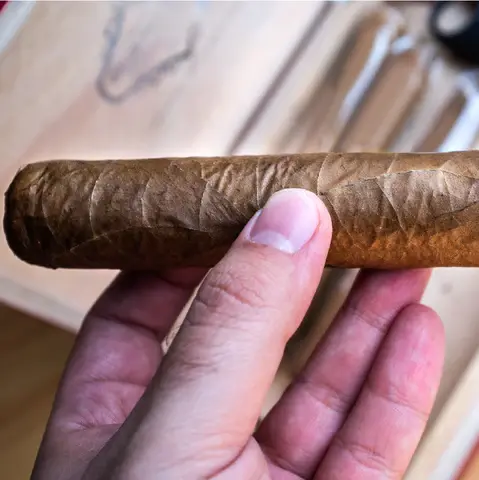Is Your Cigar Fresh?
- Cesar Escamilla Turicos
- Feb 5, 2024
- 3 min read

By fresh, we mean properly maintained. Like fine wines, premium, hand-rolled cigars will improve with age, if maintained properly. Proper storage includes an environment of around 70 degrees and 70% humidity. When cigars are exposed to drastic changes in temperature, the tobacco will expand and contract, damaging the wrapper.
When cigars are exposed to humidity levels below 62% RH, the tobacco begins to dry out. When exposed to humidity levels above 72% RH, the tobacco gets too wet and can grow mold.
How well a cigar has been maintained is not always obvious. We recommend you inspect each cigar before you cut and light it. Look for cracks in the wrapper by lightly turning or rolling the cigar in your fingers. The cigar should feel firm with a slight give or bounce. It should smell like tobacco. If it smells funky (rancid, moldy, etc.), it will taste funky.
Some refer to this technique as the pinch test, however, it's too often approached with a heavy hand (pun intended). Cigar wrappers are fragile. When damaged they will peel away from the cigar during your smoking experience.
What is the Cigar Pinch Test? The cigar pinch test is a simple test of the firmness of the tobacco in a cigar. A top-quality fresh cigar maintained at perfect humidity, somewhere between 67% to 72% RH, should have a bit of give when lightly squeezed and returned to its original shape. However, not every cigar will have the same density; some will have extra give to them, while others are densely packed and firm. The most important aspect isn’t how spongey the cigar is, but rather the consistency of the sponginess over the whole stick from head to foot.
Too many cigar enthusiasts will pinch too hard. This will damage the wrapper. Don't be that guy. Lightly roll the cigar between your fingers. You should know within a second or two. Again, the cigar should feel firm with a slight give.
Do Cigars Go Bad? Yes, unfortunately, cigars, can and do go bad. If your cigar isn’t humidified properly, it can get too dry or too wet. In some cases, you may be able to revive a poorly maintained cigar, but these damaged cigars are often better off not lit.
Under-Humidified or Dry Cigars Under-humidified cigars are too dry and won’t compress when you squeeze them. They'll feel like a block of wood. They may crunch or crackle. If your cigar seems dry, you can always re-humidify it by letting it rest in your humidor for a few days or weeks. However, if you pinch your cigar too hard and the wrapper cracks, there is nothing you can do to remedy the situation.
Over-Humidified & Under-filled Cigars When you lightly roll an over-humidified cigar between your fingers, it will compress like a sponge, and generally, it will do so throughout the length of the cigar no matter where it’s squeezed. If a cigar is under-filled, it will also contract like a sponge, but may not fully return to its original shape when you pinch it. A cigar can be under-filled in an isolated area or throughout the entire length of the cigar. Under-filled cigars often result from inexperienced rollers or brands of lesser quality. The pinch test can alert you to avoid these cigars.
How Do I Do A Cigar Pinch Test? To perform the pinch test, gently roll the foot of your cigar between your thumb and pointer finger, applying light, gentle pressure. Then, make your way up to the head to check the consistency and for any soft spots. The cigar should be firm with a slight bounce.
What Other Tests Can I Try? One of the other ways to test the freshness of your cigar is the hearing test. This test involves lightly spinning the cigar in your hand while listening for any rustling. Since tobacco is a leaf, you should expect a bit of rustling, like a slight breeze passing through a tree. But not so loud that it sounds like the crackling of stepping on autumn leaves, which can mean your cigar is too dry




Comments